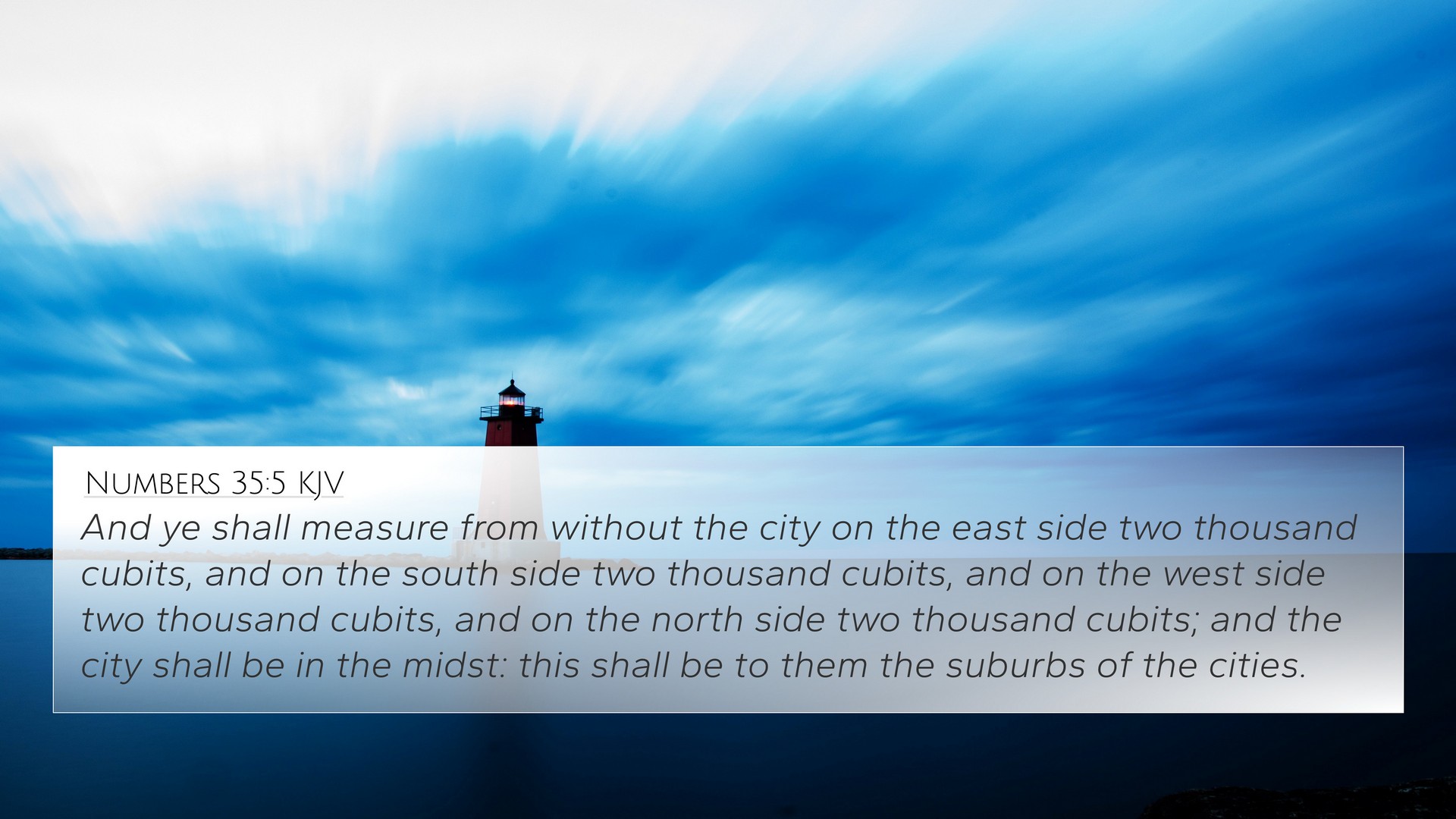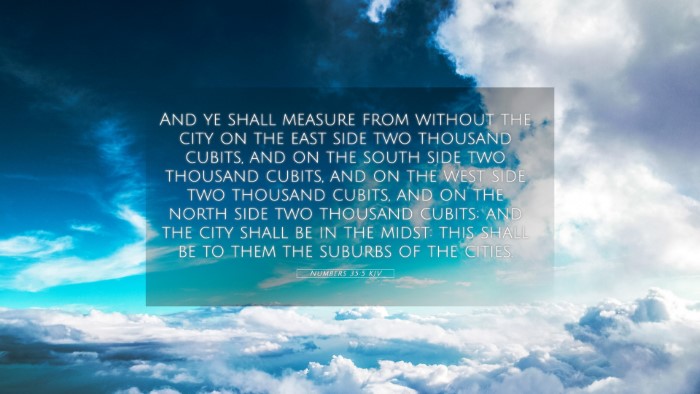Understanding Numbers 35:5
Verse: Numbers 35:5 states, "And ye shall measure from without the city on the east side two thousand cubits, and on the south side two thousand cubits, and on the west side two thousand cubits, and on the north side two thousand cubits; and the city shall be in the midst: this shall be to them the suburbs of the cities."
Contextual Overview
The book of Numbers provides a detailed account of the Israelites' journey in the wilderness and the laws that govern their community. In Numbers 35, God instructs Moses on the arrangement and the boundaries of cities of refuge, which were designated for individuals who committed unintentional manslaughter.
Verse Meaning and Exposition
This verse emphasizes the importance of spatial organization in the community of Israel. The specifics of measuring the city's suburbs signify God's order and governance over His people, reinforcing the idea that He cares about every detail of their lives.
Insights from Public Domain Commentaries
- Matthew Henry: Henry notes that the precise measurement of the suburbs serves to ensure a clear distinction between the sacred space of the city and the surrounding area. This delineation illustrates the gracious provision of God, as even the borders of the cities of refuge are marked out for the safety of the people.
- Albert Barnes: Barnes emphasizes that the suburbs were an extension of the city, offering the inhabitants room for agriculture and grazing while still being identified with the divine sanctuary. The measurements also reflected the communal structure necessary for the protection and well-being of the Israelites.
- Adam Clarke: Clarke points out that the suburbs measured two thousand cubits uniformly on all sides, suggesting equality and accessibility. This design indicates that the cities of refuge were strategically placed to be approachable for those in need of safety and mercy, showcasing God's justice intertwined with His mercy.
Thematic Connections
This verse connects to several significant themes within the Bible:
- Divine Protection: The cities of refuge represent God's provision for safety, paralleling the refuge believers find in Christ (Hebrews 6:18).
- Justice and Mercy: The laws governing the cities reflects both justice for avengers of blood and mercy for unintentional offenders, a theme echoed throughout Scripture (Micah 6:8).
- Community Structure: The delineation of cities serves as an early model of urban planning that cares for the welfare of all citizens, reflective of God's ideals for communal living (Acts 2:44-47).
Cross-References to Consider
There are several Bible verses that relate to Numbers 35:5, illustrating the interconnectedness of scripture. Key cross-references include:
- Exodus 21:13: Discusses cities of refuge for those who accidentally kill someone.
- Joshua 20:4: Provides instruction on how one may flee to a city of refuge.
- Deuteronomy 19:3: Offers further guidelines on the establishment of cities of refuge with measures for accessibility.
- Hebrews 6:18: Points to the sure hope and refuge found in Christ, echoing the sanctity of the cities of refuge.
- Micah 6:8: Highlights what the Lord requires from His people: justice, mercy, and humility—mirroring the principles underlying the cities of refuge.
- Numbers 35:6: Discusses the specific cities designated for refuge, linking spatial measures to their purpose.
- Psalm 46:1: Affirms God as a refuge and strength, again connecting the spiritual symbolism of refuge with the physical cities designated for safety.
Conclusion
Numbers 35:5 serves as a rich verse for understanding the nature of divine governance, justice, mercy, and community. The prescribed measures reflect not just physical boundaries but also spiritual truths about safety, accessibility, and God's unwavering care for His people. By engaging with this verse through cross-referencing and thematic analysis, believers can deepen their understanding of how Old Testament teachings illuminate New Testament truths and provide a comprehensive view of God’s redemptive narrative.


